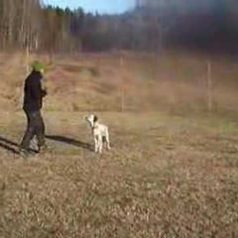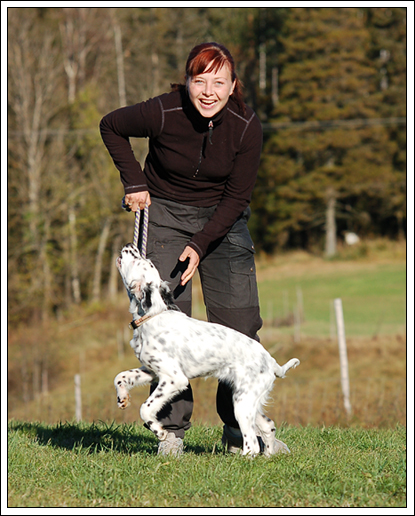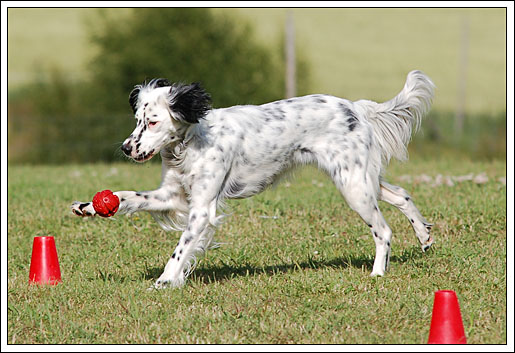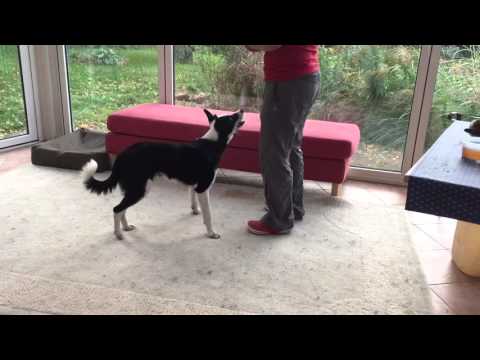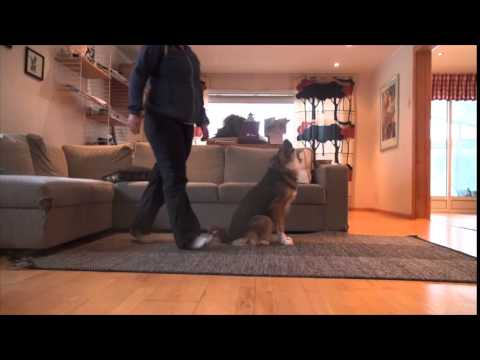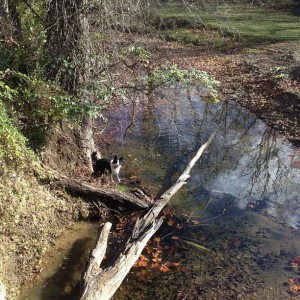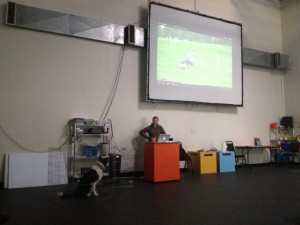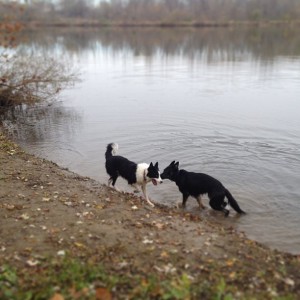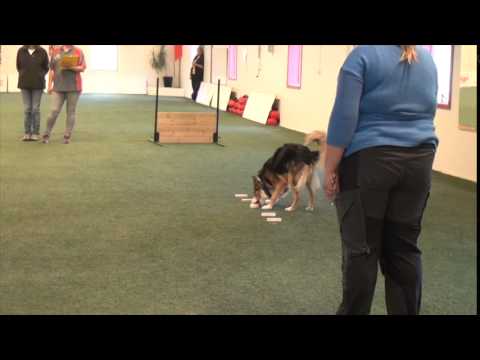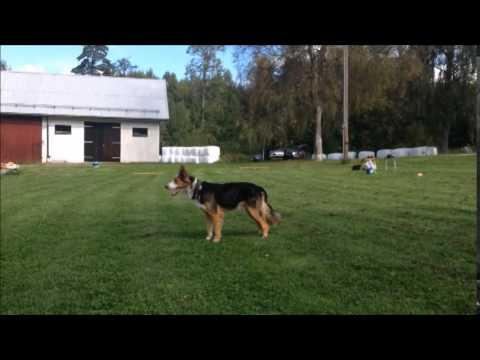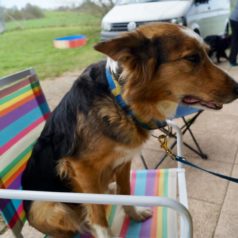
How to fix slow reactions to cues
I went to Switzerland to teach last weekend and I decided to bring Squid with me. She hasn’t been on an airplane for many years, but she handled everything like a pro and was an absolute dream to travel with. I really feel like teaching is so much easier when I have one of my dogs with me to show things with. Especially when teaching in another country where my style of training might be very new and different, and also especially when there is a language barrier and things get lost in translation. Another awesome thing about using my own dogs when teaching is that things happen when I show things with them, and that brings up subjects that might have been lost otherwise. On Sunday in Switzerland, I was fortunate enough to have a student videotaping most of my presentations, which made it possible to share one of these great moments in the blog.
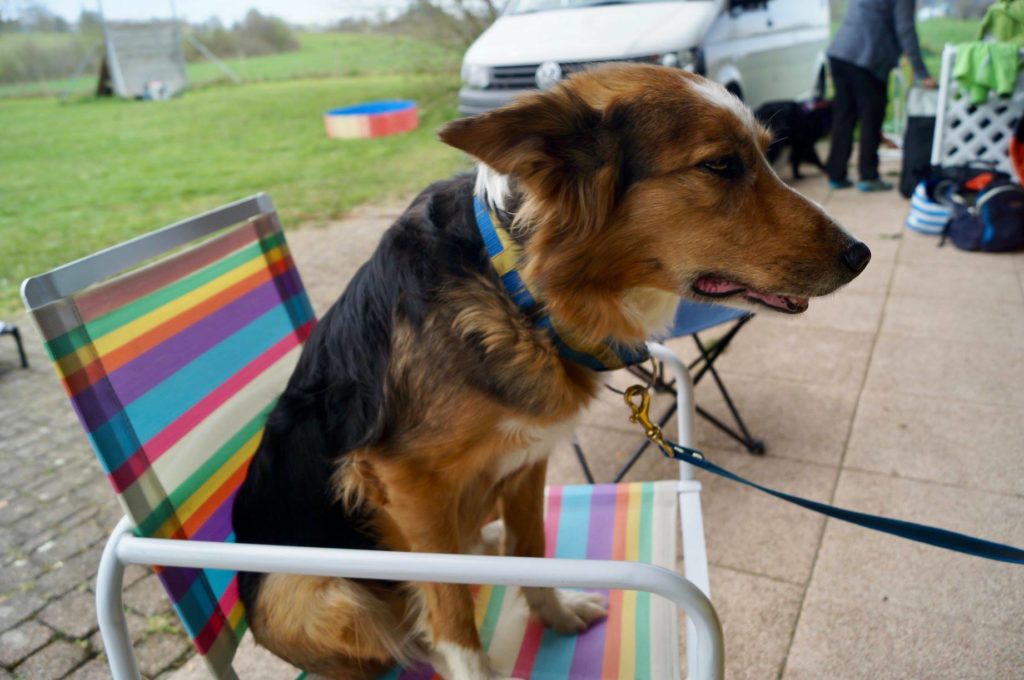
Squid was showing some distance control to the group when I found that her “up” cue really wasn’t working the way it should. She was slow to react, sometimes didn’t react at all and didn’t go all the way up in a nice sit. I quickly realised that this was because I have used the “up” cue a lot in her agility starts, trying to get her so sit up better before releasing her in a trial. And we haven’t done formal obedience in a long time. When I started competing in agility, I would wait for her to offer the nice sit up before releasing, but for the past years I have used the cue. Often many times before I’m happy with her sit.
Cues should function as “green lights” to the dog. They should be reinforcing and give the dog permission to start a behavior that they really like to perform. I never want to feel like I have to ask or beg the dog to do something. I realise that I use the term “poisoned cue” in the video in a different way than most people would, and I will stop doing that. A poisoned cue is usually defined as a cue taught with both negative and positive reinforcement. This is not the case here, the hesitation is just a function of poor usage of the cue. It still feels “poisoned” to me, which is why I used that term, but I need to think about something else (“yellow light”, maybe?).
The fix for a problem like this is easy when your dog is used to offer behavior, even if it’s already on stimulus control. I really feel sorry for trainers who never allow the dog to offer behaviors once the cue is added. How do you fix it without nagging more? Regardless of it’s a problem with reacting to the cue, or a problem with executing the behavior correctly, the solution is the same. Get the behavior offered, reward the good responses, fix any problems with execution while the behavior is offered, make sure the dog is really eager to repeat the behavior, and then – add the stimulus control back in and get the cue to function as a green light that allows the dog to perform the behavior she’s now very happy to show you.
I would often go through this process quickly right before and obedience trial, to make sure that Squid was very eager to perform the distance control positions (especially the first one). She always had really good distance control scores.
Here’s the video where you can see the before, the process, and the result. Really quick training with a big difference in before and after.


